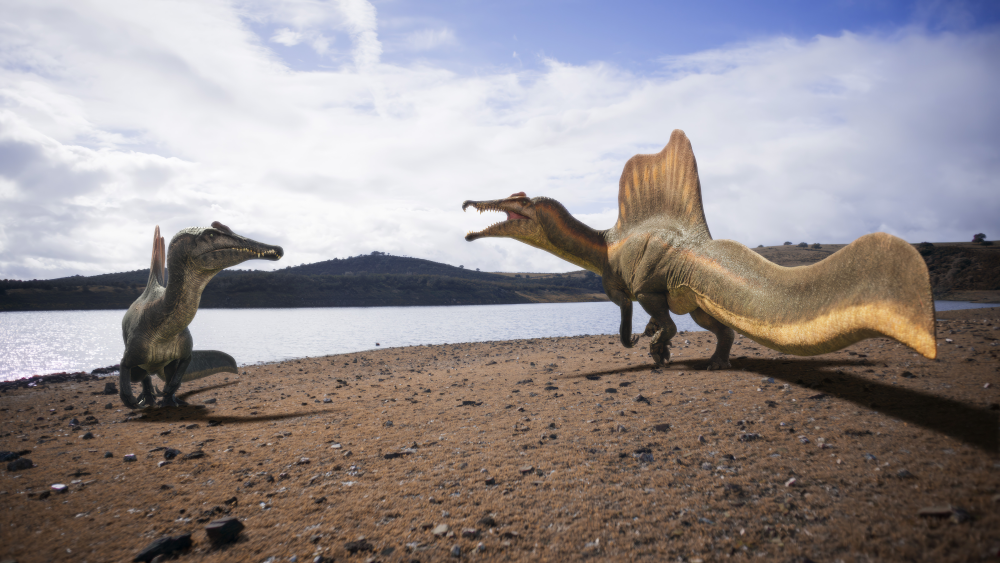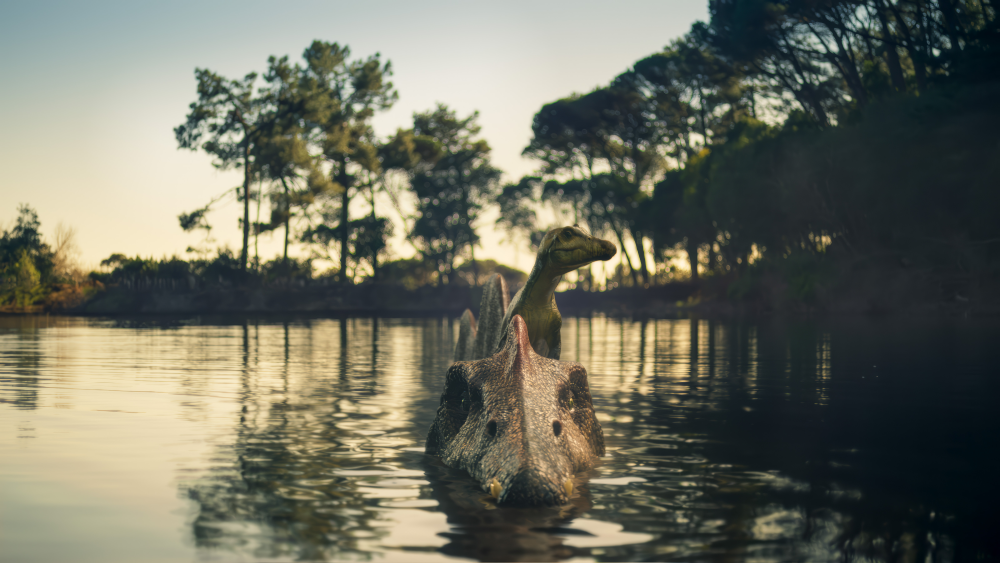Just over 90 million years ago, a prehistoric giant went extinct. Longer than Tyrannosaurus rex, and considerably taller, Spinosaurus was one of the largest theropod dinosaurs ever to stamp across the planet, but unless you count that time we heard a ringtone coming out of one’s belly in Jurassic Park III, we’ve never really got to properly appreciate what these things would’ve looked like alive. Well, that’s all about to change.
I think it’s the closest you will get to a dragon, right?
Prof. Nizar Ibrahim
You see, Walking With Dinosaurs is back, and it’s bringing with it the most accurate dinosaur models ever made. Speaking at the London preview, science consultant Professor Nizar Ibrahim – known to us at IFLScience as Spinosaurus Man – said that he had been asked to work on Spinosaurus shows previously, but wanted to wait until the time was right to get it 100 percent correct. For him, Walking With Dinosaurs was that opportunity.
So, now that we’re finally being treated to what we’ve all been waiting for, what does that creature look like? Like you dropped a bunch of steroids in your newt pond, that’s what.

The river dragon looking a lot like a dragon by a river.
Image credit: BBC Studios/Lola Post Production
“It is such a bizarre creature,” Ibrahim told IFLScience. “I think it’s the closest you will get to a dragon, right? The episode is even called The River Dragon.”
The episode, like much of the series, contains the latest science that is transforming how we see extinct animals, informing fresh insights into everything from their appearance and coloration, to where and how they lived. For Spinosaurus, that includes reinforcing the many ways it was perfectly adapted for living in that thing we’ve always been led to assume dinosaurs hated: water.
“For a very, very long time, scientists essentially decided that dinosaurs just don’t do water,” said Ibrahim. “They never invaded the aquatic world, which always struck me as odd – to have this completely dominant group of animals, and somehow they all suffer from hydrophobia?”
“Here we have a crocodile-snouted dinosaur with narrow jaws. These are the kinds of jaws you will use if you want to close them rapidly underwater. You have conical teeth to catch slippery prey, and then it turns out this animal even has a paddle tail and very dense bones, like what you might see in manatees (it’s important in buoyancy control in the water). We have all of these different lines of evidence that this thing lived in a river system, a river of giants, filled with giant SUV-sized fish and all sorts of other bizarre and wonderful creatures.”
A proficient predator in river ecosystems, then, but Spinosaurus was a beast that likely had a softer side, too, and we get to explore this in a sequence that shows a proud male swimming about with his offspring. If you’re questioning the likelihood of a kind of dinosaur-daddy day care, might we counter with: science.
We also have dinosaurs sitting on clutches of eggs, and there’s some circumstantial evidence suggesting that some of these were males sitting on the eggs, just like in an emu.
Prof. Nizar Ibrahim
“We have a tendency to look at dinosaurs with a mammal-centric view,” said Ibrahim. “We automatically assume that it’s going to be like a grizzly bear mama taking the kids somewhere, but birds are living dinosaurs, and in birds, both parents often play a very important role.”
“It turns out that in the most ‘primitive’ or ‘basal’ birds, male parental care is actually the rule. These are the birds that are closest, in some ways, to the dinosaurs. Things like an emu or a rhea or a cassowary.”
“We also have dinosaurs sitting on clutches of eggs, and there’s some circumstantial evidence suggesting that some of these were males sitting on the eggs, just like in an emu. So, I think [this male Spinosaurus and its offspring] was a way for us to challenge these ideas that people have.”

All aboard the Spinosaurbus.
Image credit: BBC Studios/Lola Post Production
Impressed? Us too, and Spinosaurus is just one of so many incredible prehistoric animals being brought to life like never before in Walking With Dinosaurs. The series is also cut with segments that take us to some of the most exciting fossil sites on Earth right now, explaining how science has informed every decision you see on the screen.
So, don’t miss it! Watch Walking With Dinosaurs from Sunday, May 25 at 6.25 pm on BBC One and iPlayer.
Source Link: The Longest Predatory Dinosaur Known To Science Was Probably A Great Dad, Too